
views
What most people call "flexibility" includes the range of motion in your joints as well as the length of the ligaments and tendons that surround those joints. If you have the goal to become flexible, simply stretching may not be enough. Try yoga or pilates to improve your flexibility and pay attention to your overall health. Staying nourished and well hydrated will help you become flexible.[1]
X
Research source
Become flexible by stretching: do butterfly stretches, arm extensions, seated trunk twists, and lunges. Certified personal trainer Danny Gordon says to “start out slow” and spend “anywhere from 10 to 30 seconds” on each stretch. Continue to improve your flexibility by practicing yoga or pilates.
Stretching
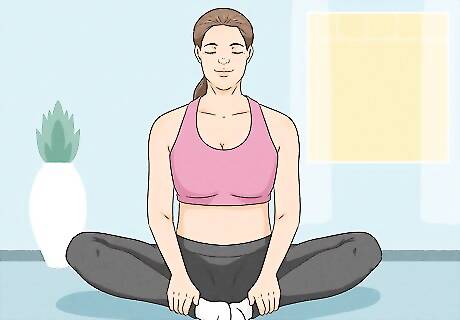
Do a butterfly stretch. The butterfly stretch provides a good stretch for your glutes and thighs, as well as helping loosen your neck and back. Start by sitting on the floor with your legs extended. Bend your knees to bring your feet together in front of you so that the soles of your feet are touching. Grasp your feet with your hands and lower your body toward your feet on an exhale. Make sure you engage your core and keep your back neutral, shoulders rolled back and not hunched. Fold forward as far as you comfortably can. Hold the fold for 30 seconds to 2 minutes, breathing deeply.
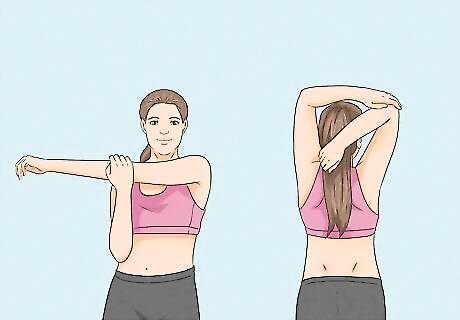
Stretch your arms and shoulders. Start your stretching regimen either standing or sitting on the edge of a sturdy chair. If you're going to stretch your arms and shoulders while sitting, make sure you're sitting with good posture. Keep your back straight and neutral with your shoulder blades tucked down in line with your spine. Reach one arm straight across your chest, pressing gently with your other hand just above your elbow until you feel a stretch. Don't push your arm to force it further than it naturally goes. Hold the stretch for about 5 seconds, breathing deeply. Then release and do the other arm. Lift one arm overhead and bend your elbow, dropping your hand behind your head. Grasp your fingers from below with the other hand if you can. If you can't, place your other hand below your elbow and push back gently until you feel a stretch in your triceps. Hold the stretch for about 5 seconds, then switch and do the other arm.
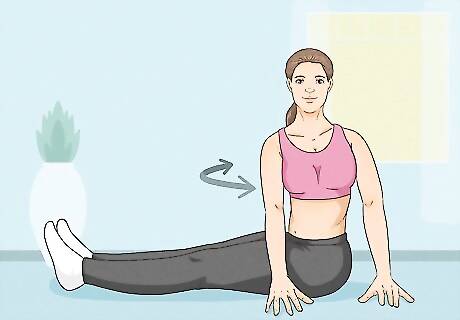
Add seated trunk twists. Return to a seated position with your legs extended straight in front of you, feet and legs pressed together. Engage your core and sit tall with your shoulders rolled back so that your shoulder blades fall in line along your spine. On an exhale, twist from the waist, bringing your hands to rest on the floor on the other side of your body. Keep your back neutral and make sure you're twisting from the waist, not angling your hips. Hold the twist for 15 to 30 seconds, then return to center and repeat with the other side. You can do 2 to 4 repetitions of this exercise on either side.
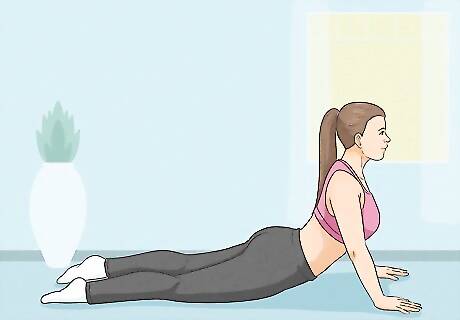
Lift into a swan stretch. The swan stretch is an adaptation of a yoga and pilates exercise that really opens up your chest as well as stretching your back and core. Start this stretch by lying on the floor on your stomach with your legs extended behind you. Bend your elbows and press your palms into the floor on either side of your shoulders. On an exhale press up to extend your arms straight. Keep your shoulders back and down so they are rolling away from your ears. Try to draw your shoulder blades together, grounding your hips into the floor. Feel the stretch in your chest. Hold the position for 15 to 30 seconds, then release back down to the ground. Repeat this stretch 3 to 5 times.
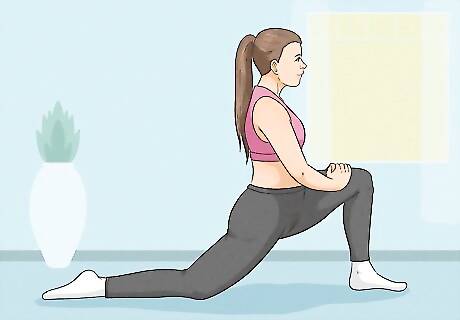
Kneel to stretch hip flexors and quads. This kneeling exercise is similar to lunges, but extending your back leg helps stretch your hip flexors as well as your hamstrings and quads. Start by kneeling on the floor. Step one foot forward so that your knee is at a right angle. Step forward as far as you comfortably can – you'll feel a stretch in the opposite hip. Your shin should be perpendicular to the floor, your knee directly over your ankle. Grasp your front knee with your hands and press your hips forward, breathing deeply. Hold the pose for 15 to 30 seconds, then return to a kneeling position and repeat on the other side.
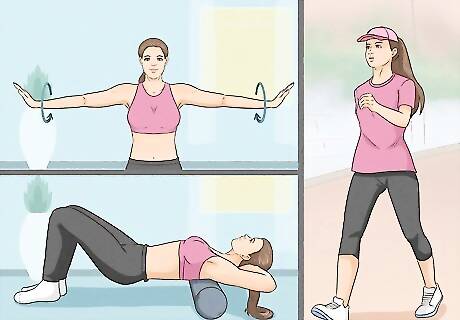
Warm up before starting any stretches. If you attempt to do stretching when your muscles are cold, you risk muscle strain or more significant injuries. Ideally, add your stretching regimen to the end of your regular exercise routine.Pre-Stretch Warm Up IdeasLight cardio. Walk or jog for 5-10 minutes.Light dynamic stretching. Some options are lunges, arm circles (moving your arms in large circles in both directions), or toe touches. Just don’t be static in any one position.Loosen your joints. Use a foam roller to roll out your back, legs, glutes, and hip flexors.

Try a bridge to stretch your back. The bridge is a good whole body stretch that targets your back as well as stretching your chest, legs, and core. Begin this stretch by lying on the floor on your back with your knees bent at 90-degree angles and your feet flat on the floor. Press your arms and palms into the mat on either side of you and lift your hips until your body forms a bridge with your thighs roughly parallel to the floor. Hold the bridge for 5 to 10 seconds, breathing deeply, then release to the ground. You can repeat this 3 to 5 times. If you're looking for something more challenging, get into the bridge and then raise one leg towards the ceiling. Release your leg, then repeat with the other leg.
Using Yoga or Pilates
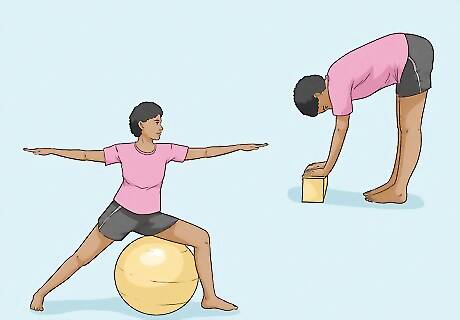
Choose poses that can be easily modified. When you start yoga or pilates practice, you may not be able to achieve the full extent of the pose. Yoga blocks and rolled or folded towels can ensure you maintain the correct posture and don't force yourself to go too far. For example, the forward fold will increase flexibility in your legs and back. You may not be able to place your palms flat on the floor beside your feet. However, you may be able to place your hands on a yoga block on the floor in front of you. Your body will be different from one day to the next. Have patience and try not to get frustrated if you find you aren't able to go as far into a pose one day as you've been able to in the past.
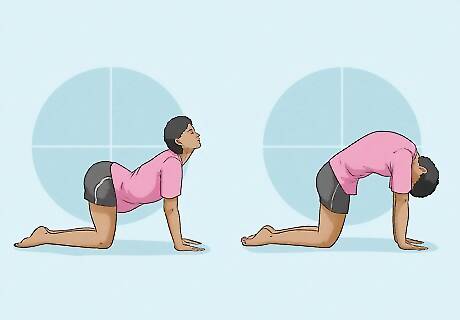
Loosen up your spine with the cat and cow pose. The cat and cow pose is a good yoga pose for beginners that can help increase flexibility in your back and core, as well as relaxing your mind and body. Start by coming to all fours on the ground. Make sure your wrists are directly under your shoulders and your knees are directly under your hips. Flatten out your back so that it resembles the flat top of a table and roll your shoulders down and back away from your ears. Breathe deeply. On an inhale, arch your back deeply and lift your head up, opening your chest. Pause. On an exhale, curve your back upward toward the ceiling, tucking your chin down into your chest and curving your shoulders slightly in. Repeat the movement for 5 to 10 breath cycles, maintaining the coordination between breath and movement.
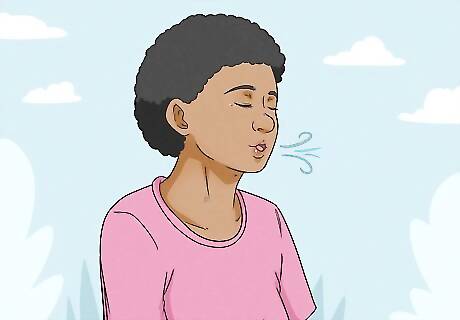
Hold poses for several breaths. One of the keys to using yoga or pilates for flexibility is to maintain the pose and breathe deeply into the stretch. This relaxes your body and will enable you to go further into the stretch. As you inhale, think about solidifying your strength. On each exhale, release any tension and try to sink deeper into the stretch.
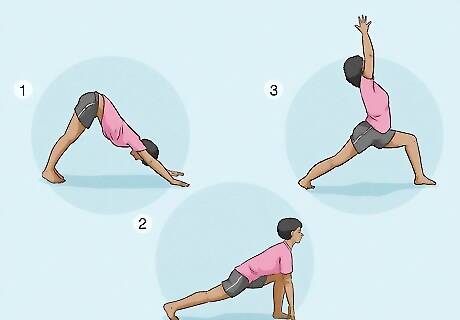
Engage in continuous movement. Many yoga poses and pilates postures can be strung together with a movement for each breath. The continuous movement will help improve your flexibility as well as increasing blood flow to your joints. Remember to maintain focus on your breath. If you become out of breath, or feel yourself holding your breath rather than coordinating your breath with your movement, slow down.

Work up to sun salutations. A sun salutation is a vinyasa, a series of yoga poses done continuously with a breath for each movement. There are 12 poses in total in the sun salutation. You'll start in a standing position, in what is known as the mountain pose in yoga. You'll move through the poses fluidly, coordinating your movement with your breath, then end once again in mountain pose. Sun salutations also provide a good cardiovascular workout, and can serve as a warm up for other, more intense stretching or flexibility work.
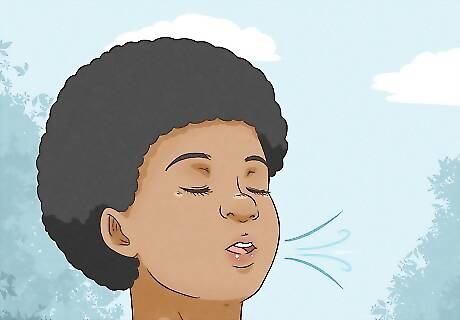
Focus on your breath. The breath is a central part of both yoga and pilates. Take a few minutes before you begin your yoga practice to meditate on your breath. Inhale slowly through your nose, pause, then exhale slowly through your mouth.
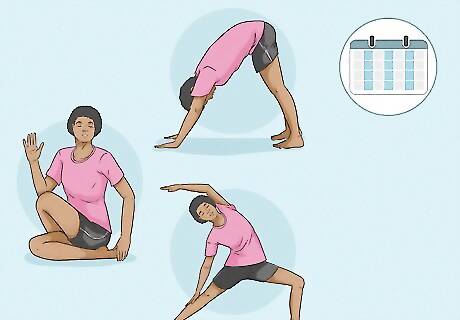
Practice regularly and consistently. You won't notice any significant improvement in your flexibility unless your practice is consistent. You don't necessarily have to practice every day, but you should be able to set aside some time 3 or 4 days a week. Start by practicing for 10 to 15 minutes 3 or 4 days a week. If you enjoy your practice, you may want to add more days, but make sure you can do this consistently.
Maintaining Overall Health
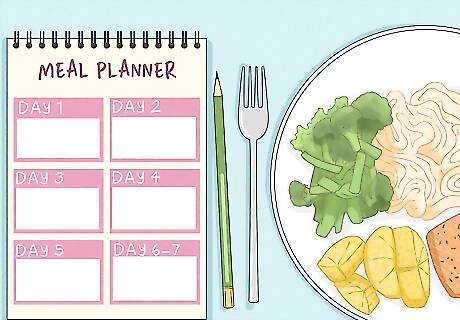
Eat nutritious whole foods. While there aren't any specific foods that have been proven to increase your flexibility, a good diet is essential for healthy and strong muscles and bones. Track your eating in a food diary for a couple of weeks so you can see what you're really putting into your body. Eat foods that are as fresh as possible, rather than prepared meals, frozen dinners, and junk food. Create meal plans to ensure that your meals are balanced, and practice portion control.

Drink plenty of water. Flexibility requires healthy muscles, ligaments, and tendons. You can't expect optimal performance from muscles that are dehydrated. Dehydrated muscles also are tight and stiff. If you try to stretch stiff, dehydrated muscles, you could end up with a serious injury.Ways to Drink More WaterSet a goal. Healthy adult men should shoot to drink 3.7 liters (125 ounces) of water per day, whereas healthy adult women should aim to drink 2.7 liters (91 ounces) of water per day.Carry water with you. Keep a reusable water bottle in your bag or on your desk so water is always within reach.Set a reminder on your phone. Use your cell phone’s reminder feature to help you remember to drink water every hour.Drink more water-based beverages. These include unsweetened tea, carbonated water, and flavored water.
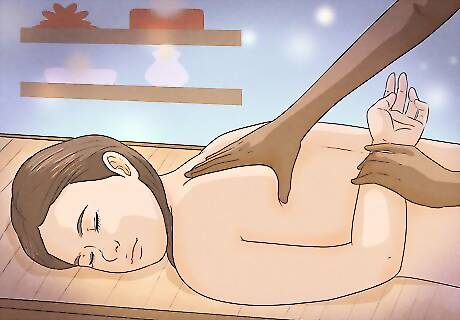
Get a massage. Especially if you work out intensely or regularly engage in physical labor, a massage will help work out kinks and knots that develop in overworked muscles. Over time, these kinks and knots can significantly decrease your mobility. You can use foam rollers to massage yourself, especially after workouts. Find a massage therapist and try to make an appointment for a massage once every few months. It's not only relaxing but also can help with your goal to become more flexible.
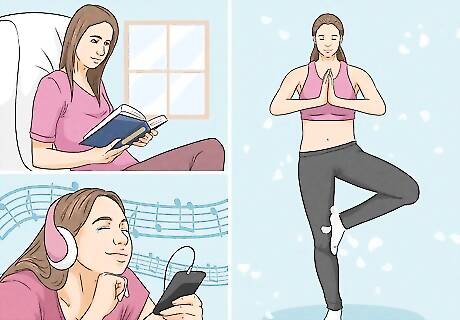
Take time to relax. When you're stressed out, you can carry a lot of tension in your muscles. This will cause you to be significantly less flexible. If you don't take time to relax and unwind, you will quickly undo any progress you've made towards becoming more flexible.Ways to RelaxStart meditating. Start by meditating for 5 or 10 minutes a day, and gradually increase your time. If you meditate regularly you will notice your body is less tense and your mind is more focused.Take walks. Go for a slow walk in the morning or evening.Read. Read a book for pleasure.Listen to music. Make sure that it is music you find relaxing.


















Comments
0 comment